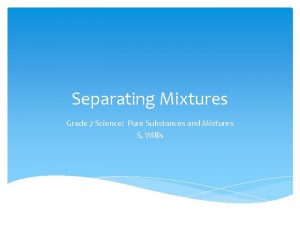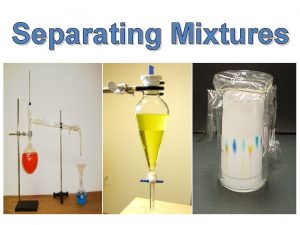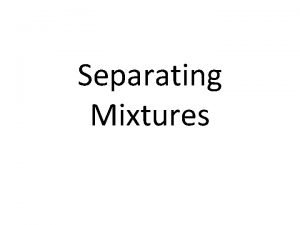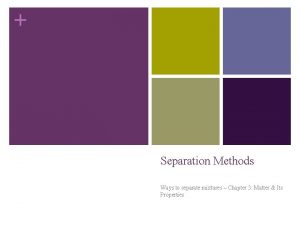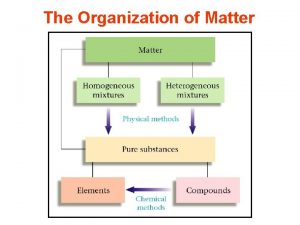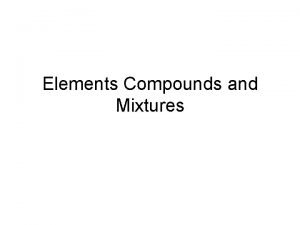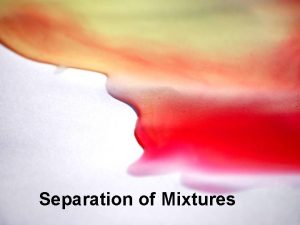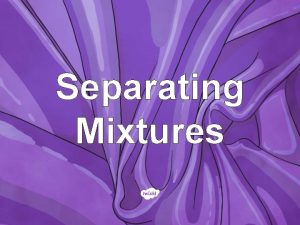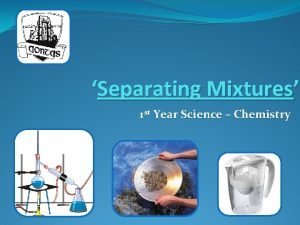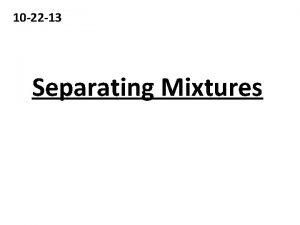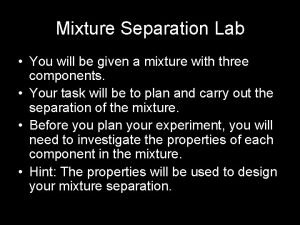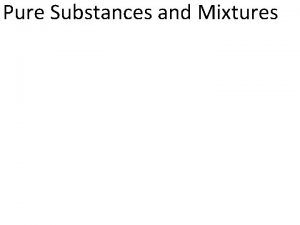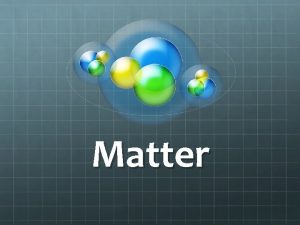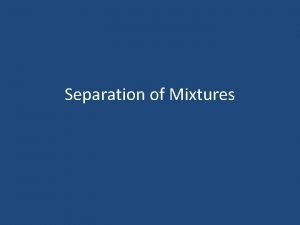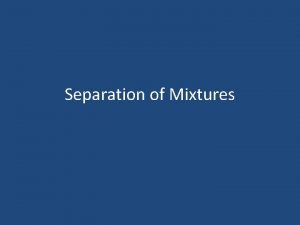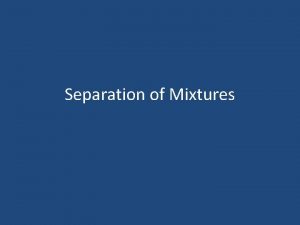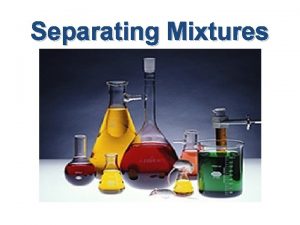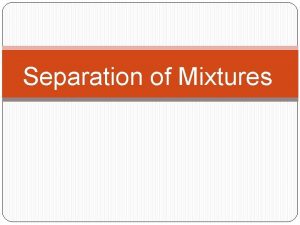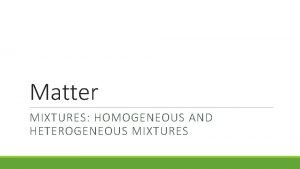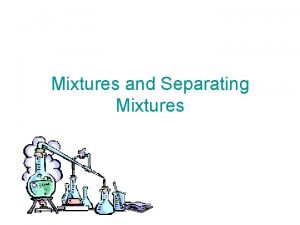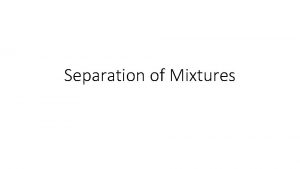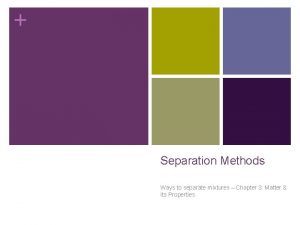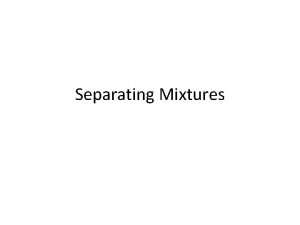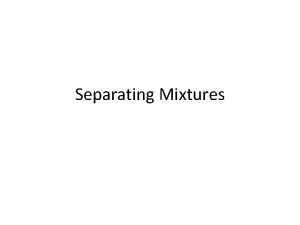Mixtures and Separation LO explain how to separate



















- Slides: 19

Mixtures and Separation L/O – explain how to separate different mixtures Last week: Define the terms: • Dominant allele • Recessive allele Last term: Describe the advantages of an electron microscope Last Year: An object was magnified 250 times to produce an image that was 40 mm across. Calculate the actual size of the object. • • • Key Words Mixtures Chromatography Crystallisation Filtration Distillation

A pure substance has only one type of molecule in it. Identify which of these diagrams show a pure substance

A pure substance has only one type of molecule in it. The circled diagrams all show a pure substance because they only have one type of molecule.

• A pure substance consists only of one element or one compound • A mixture consists of two or more different substances, not chemically joined together

A pure substance has a fixed melting and boiling point. An impure substance melts and boils at a range of different temperatures

Bronze: Describe the difference between a pure substance and an impure substance. Silver: Justify why G is a mixture (impure substance) but I is a pure suibstance Gold: Explain why a mixture of different substances might not have a single melting temperature.

Filtration allows you to separate an insoluble solid from a liquid The liquid is able to pass through the filter paper but the solid cannot.

Crystallisation If you have a soluble solid dissolved in a liquid, you cannot separate them by filtration. You can evaporate the liquid, leaving behind the solid. This works because the solid has a much higher boiling point than the liquid

Filtration and crystallisation can be used together if you have both a soluble solid and insoluble solid. For example a mixture of sand, salt and water. https: //www. youtube. com/watch? v=vi_SJBnxm. Ho

Bronze: Produce a clear, labelled diagram showing how filtration and crystallisation can be carried out. Silver: Justify why filtration and separation can’t always be used for the same mixtures. Gold: Evaluate the methods for both filtration and crystallisation. Identify any possible mistakes that could be made and hazards when carrying them out.

Chromatography Paper chromatography is used to separate mixtures of soluble substances. These are often coloured substances such as food colourings, inks, dyes or plant pigments.

Chromatography Some inks dissolve more easily than others. This means they will move up the paper faster.

Chromatography In chromatography there are 2 phases: • Stationary phase – the paper (it doesn’t move) • Mobile phase – the solvent / liquid (it does move)

Chromatography Separation by chromatography produces a chromatogram. A paper chromatogram can be used to distinguish between pure and impure substances: • a pure substance produces one spot on the chromatogram • an impure substance, or mixture, produces two or more spots

Chromatography For each spot you can calculate the Rf value. The Rf value tells you how easy it was for that substance to dissolve and move up the paper.

Exam Practice. Attempt each of the following exam questions



Self Assess your answers
 Separating mixtures grade 7
Separating mixtures grade 7 5 importance of separating mixtures
5 importance of separating mixtures Magnet in separating mixtures
Magnet in separating mixtures How to separate heterogeneous mixtures
How to separate heterogeneous mixtures Solid mixtures
Solid mixtures Mechanical separation of mixtures
Mechanical separation of mixtures Manual separation of mixtures
Manual separation of mixtures Evaporation separation example
Evaporation separation example Mixture vs solution
Mixture vs solution How to separate raisins and flour
How to separate raisins and flour Apparatus used in evaporation
Apparatus used in evaporation Is english language and literature two separate gcses
Is english language and literature two separate gcses How would you separate salt and sand
How would you separate salt and sand Centerlines are used to separate the title block and notes.
Centerlines are used to separate the title block and notes. How to separate sand and finely ground polystyrene foam
How to separate sand and finely ground polystyrene foam Sapratibandha daya and apratibandha daya
Sapratibandha daya and apratibandha daya Elements compounds and mixtures worksheet
Elements compounds and mixtures worksheet Pure substances and mixtures worksheet answers
Pure substances and mixtures worksheet answers How do you classify uniform and non-uniform mixtures?
How do you classify uniform and non-uniform mixtures? Stirring utensil that will not conduct heat as you stir!
Stirring utensil that will not conduct heat as you stir!
